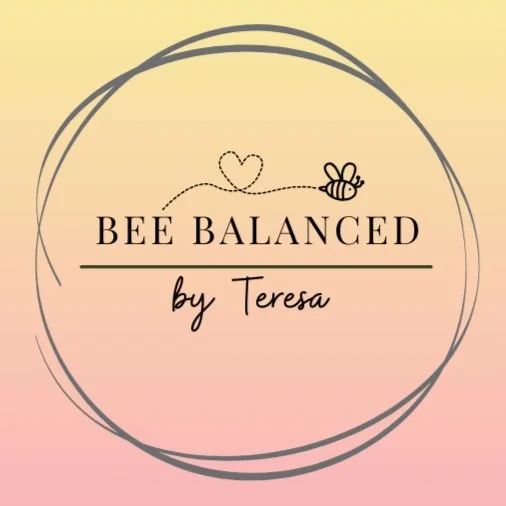Resources/Research
✨ How to Use This Page
Bookmark it and check back — I’ll keep updating it with new resources.
Share it with friends who might also enjoy these tools for creativity and wellness.
Remember: these are here to inspire, not overwhelm — start with what sparks your curiosity
Resources I Love
An “in development” handpicked collection of tools, books, talks, videos, and creative supplies that support balance, joy, and creativity. I am slowly curating this list because I want to be sure they are products I would personally recommend or use myself. Some links are affiliate links, which means I may earn a small commission (at no extra cost to you). Thank you for supporting my work!
---
🎨 Creativity Tools
Favorite Watercolor Set –
Mixed Media Starter Kit –
My Go-To Brushes & Pens –
Creative Journals & Sketchbooks – small: https://a.co/d/cxwLqvK
---
🌿 Wellness & Balance
All things related to mindfulness, including free guided meditations and a ton of articles and resources. [https://shop.mindful.org?sca_ref=9635022.K9gpk4qXNS&utm_source=teresa-rodriguez&utm_medium=affiliates&utm_campaign=uppromote]
Daily affirmation cards: https://shop.mindful.org?sca_ref=9635022.K9gpk4qXNS&utm_source=teresa-rodriguez&utm_medium=affiliates&utm_campaign=uppromote
Mindful worksheets, – Enhance Mindfulness: 300 Worksheets - Mindfulness Exercises
Mindfulness at work: Mindfulness at Work - Mindfulness Exercises
Meditation App –
Relaxation Tools (candles, oils, etc.) –
(These support slowing down, tuning in, and creating more balance in your day.)
---
Sensory and Comfort Friendly products:
Clothing: Quince. Quince | High Quality Essentials, Radically Low Prices
I LOVE all the clothes I purchase from them. They are made with high quality materials at a reasonable cost. Their clothes also hit the mark for leisure and comfort while also having professional looks that allow for comfort without sacrificing style and quality, such as elastic waistbands and clothes material that is soft and breathable.
📚 Books We Love
Current Women’s Wisdom Circle Book –
Past Favorites – Untamed by Glennon Doyle
Journals & Guided Writing Books –
Informational: https://www.yourbrainonart.com/
---
💼 Professional Growth (For OTs & Caregivers)
Reflective Practice Resources –
Professional Development Books –
Creative Therapy Tools –
--
Personal Growth Talks:
On Creativity: https://youtu.be/MhjkZ-ABz08?si=Z1bamJxC0ppX6Mi5
On Hope: https://youtu.be/qt0fRSx5Kl4?si=_9VINVI3ruKFycrc
Additional resources and links:
A handy guide on the power of play and suggestions on how to integrate it into your daily life: The Power of Play: Why Adults Need It and How to Integrate It into Daily Life — A Healing Place
Working on an art project for just 45 minutes, regardless of your skill, can decrease stress and has been shown to reduce cortisol levels in up to 75 percent of people.
In 2023 Ivy Ross, and Susa Magsamen published Your Brain on Art. The book is a guide to the new science of neuroaesthics that includes breakthrough research, interviews and stories from people in many fields of work and study, It’s an exciting call to bring back the arts, how it can make an impact on health and medicine and discusses the integration between science and the arts.
People who experience trauma can have difficulty with taking about their traumatic experience because of a shut down in the Broca’s area of the brain (one of the regions responsible for language and speech). This was observed in the research of Dutch psychiatrist Bessel van der Kolk who used fMRI scans. Art interventions can help people who have experienced trauma make sense of their experiences and enables them to restore their ability to share their memories with less emotional dysregulation. Creative Forces, is one such intervention program.
The NeuroArts Blueprint was launched in 2021 to build awareness of the intersections between science, the arts and technology. “Its mission is to cultivate an ecosystem for neuroarts, defined here as the transdisciplinary and extradisciplinary study of how the arts and aesthetic experiences measurably change the body, brain, and behavior, and how this knowledge is translated into specific practices that advance health and wellbeing”
Can Coloring Mandalas Reduce Anxiety? A Replication Study: Art Therapy: Vol 29, No 2
The virtuousness of adult playfulness: the relation of playfulness with strengths of character | Psychology of Well-Being | Full Text This 2011 study found that higher playfulness scores were associated with: higher creativity, appreciating beauty, approaching life with excitement and energy, playful expressions of love, a sense of hope, a sense of humor.
The Playful Advantage: How Playfulness Enhances Coping with Stress: Leisure Sciences: Vol 35, No 2
The Importance of Play for Adults - National Institute for Play
The Importance of Play for Adults: Tips for Being More Playful
Why It's Important To Make Time For Play As An Adult | Henry Ford Health - Detroit, MI
The Power of Play for Adults (Reignite Your Joy) - Personal Growth

